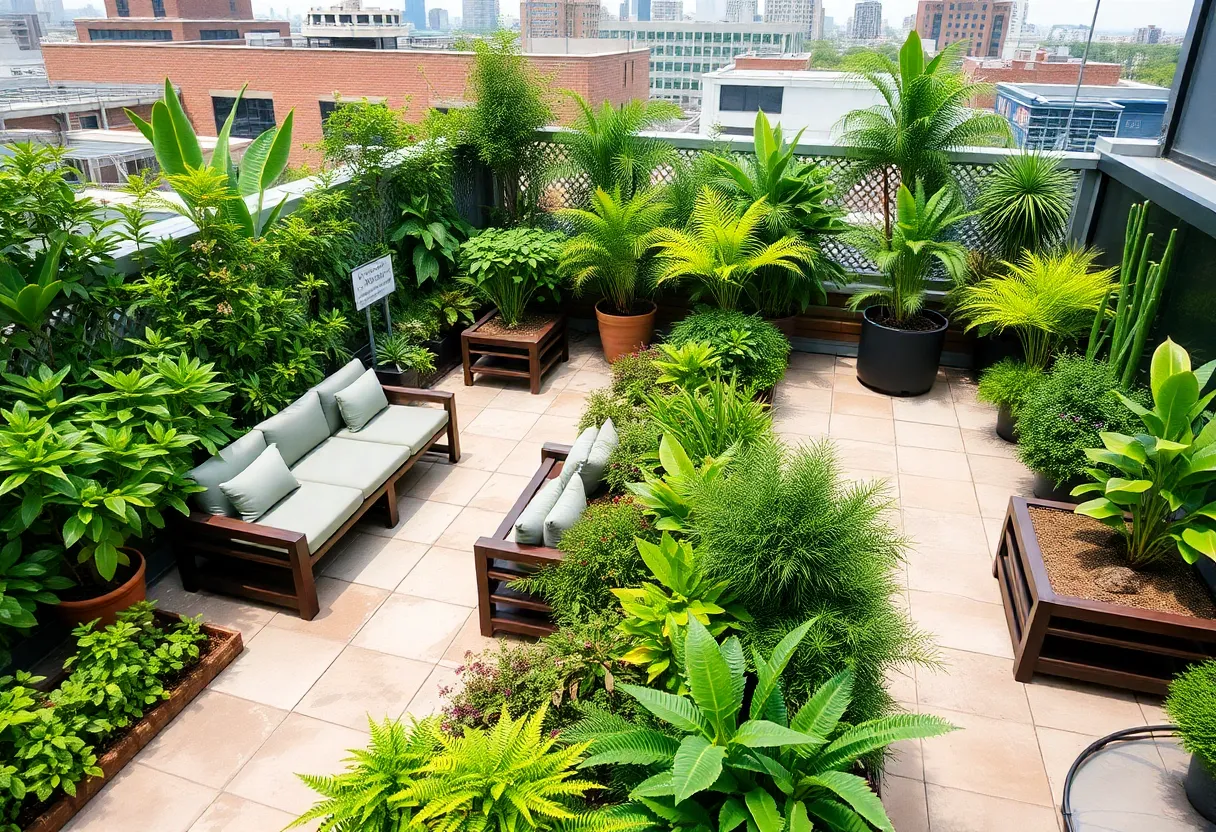

An inviting rooftop garden showcasing an array of plants and comfortable seating for relaxation.
Want to target the right audience? Sponsor our site and choose your specific industry to connect with a relevant audience.
Prominent brand mentions across targeted, industry-focused articles
High-visibility placements that speak directly to an engaged local audience
Guaranteed coverage that maximizes exposure and reinforces your brand presence
Interested in seeing what sponsored content looks like on our platform?
May’s Roofing & Contracting
Forwal Construction
NSC Clips
Real Internet Sales
Suited
Florida4Golf
Click the button below to sponsor our articles:
Sponsor Our ArticlesA roof garden can transform an ordinary rooftop into an extraordinary oasis. With careful planning, a roof garden not only enhances the aesthetic appeal of a building but also contributes to eco-friendliness by managing stormwater and improving air quality. This guide provides a comprehensive approach to installing a roof garden successfully.
Before embarking on your roof garden project, it’s crucial to understand the structural integrity of your building. Not all roofs can support a garden due to factors like load-bearing capacity, slope, and existing materials.
Consult with a structural engineer to determine the maximum load your roof can support. Generally, a **saturated soil** can weigh up to 30 pounds per cubic foot. Factoring in planters, decorative elements, and even people using the space is vital.
There are several types of roofs suitable for gardens:
When planning your roof garden, select a growing system that will best suit your environment and aesthetic preferences.
A traditional soil-based garden can provide a natural growing environment but requires heavier structural support. This system is ideal for larger plants and trees.
Modular systems consist of pre-planted trays or containers, making them lighter and easier to manage. They are perfect for those new to gardening and require minimal maintenance.
Pre-vegetated mats or layers can be installed directly onto the substrate. These systems allow for immediate coverage and are often eco-friendly.
Once you’ve settled on a system, the next step is to design your garden. A well-thought-out design enhances both usability and aesthetics.
Consider incorporating various plant sizes and types. Use vertical gardening techniques to maximize space. Elements like pathways, seating areas, and water features can also enrich the design.
Choose plants that are suitable for your climate and the specific conditions on your rooftop. Some factors to consider include:
In addition to plants, include hardscaping elements like pathways, benches, and decorative features. These additions can significantly enhance the overall experience of the roof garden.
Proper water management is essential for the health of your roof garden. Consider implementation strategies that will effectively manage both irrigation and drainage.
Install an efficient irrigation system. Options include:
Ensure proper drainage to prevent water pooling on the roof. Utilize drain mats and channels to facilitate water flow. Regular maintenance of drainage systems can prevent issues like leaks and plant root rot.
Once planning and preparation are complete, you can begin the installation process.
Collect all necessary materials before starting the installation. This includes soil, plants, containers, and hardscaping elements.
Begin with the base layer. If using a soil-based system, ensure that the roofing membrane is protected with a root barrier. A geotextile fabric can help separate soil from the waterproof layer.
Start planting according to your design layout. Ensure each plant has adequate space for growth and root development. Always follow planting guidelines for the specific plants chosen.
After planting, add hardscaping features. Ensure they are securely anchored to withstand wind and weather.
Ongoing maintenance is crucial for the longevity and success of your roof garden.
Regularly monitor moisture levels and adjust watering as necessary. Seasonal fertilization will also support plant health through optimal nutrient availability.
Weeds can quickly overtake a garden, so routine checks are essential. Use natural methods for pest control when possible to maintain an eco-friendly approach.
Each season demands different maintenance tasks. Be vigilant about protecting plants during extreme weather and may need to adjust plant selections based on seasonal changes.
Installing a roof garden is an enriching DIY project that offers numerous benefits, from improving building aesthetics to providing recreational space. With thoughtful planning, the right materials, and ongoing care, you can create a thriving garden that complements your living space. Take the time to explore various elements, design ideas, and plant types to tailor your roof garden to your preferences and local climate. Remember to regularly assess and maintain your garden for continued success.
News Summary Columbia, South Carolina, experienced severe weather conditions this Sunday morning as tornado and…
News Summary In a historic execution, Brad Sigmon, 67, was put to death by firing…
News Summary Huey Magoo's has officially opened its doors in Greenwood, SC, marking its 70th…
News Summary The community of Greenwood, South Carolina, is in mourning after the tragic death…
News Summary Komar Industries has announced the relocation of its subsidiary, Bace, from Charlotte, NC…
News Summary Canada’s newly sworn-in Prime Minister Mark Carney has announced a snap election for…